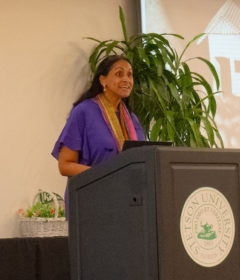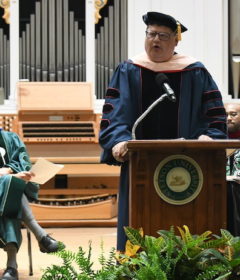Stetson’s Beckerath Organ Named Among ‘Most Amazing’
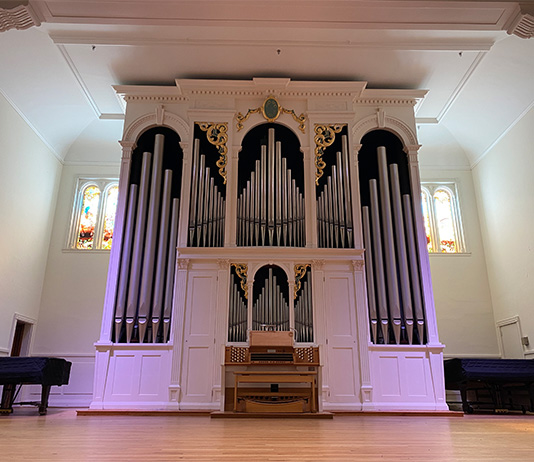
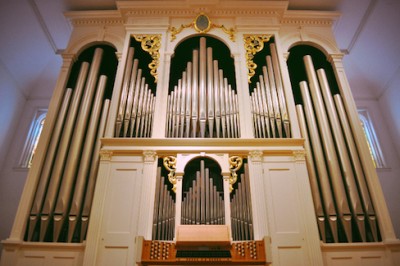
Stetson’s Beckerath Organ, installed in Lee Chapel 63 years ago, has a new distinction. In late January, College Cliffs, a provider of higher-education rankings, included the Beckerath Organ among its “20 Oldest and Most Amazing Organs in College Campus Chapels.”
A mark of rich tradition, these organs come with high historical value and were created by some of the biggest organ manufacturers in the world, College Cliffs noted. And Stetson’s organ certainly fits that description.
Rudolf von Beckerath (1907-1976), a renowned organ builder of the 20th century, created the organ’s 2,500 pipes using a tin-and-lead alloy, cutting each one to tune. The work was done in his Hamburg, Germany, factory. Reportedly, Stetson purchased the organ for $35,000 in 1961.
As cited in this Stetson Today article (updated in 2019 after an original posting in August 2017), “Stetson’s massive pipe organ is housed in an ornate case that rises almost to the ceiling in Lee Chapel, decorated with golden accents and a cartouche bearing Stetson’s motto, ‘Pro Deo et Veritate (For God and Truth).’”
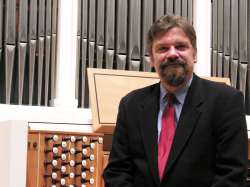
A 2011 Stetson Today article marked the organ’s 50th anniversary on campus in Lee Chapel at Elizabeth Hall, a building that was constructed in 1892.
According to Linda Weems, CollegeCliffs.com editor-in-chief, pipe organs come with “prestige and grandeur appearances that add more aesthetic value to schools and chapels.” Weems continued: “They help beautify the environment of the chapels and attract more visitors, especially when the pipe organ comes with a long history.”
‘First Modern Encased, Mechanical-Action Organ’
For Stetson, its Beckerath Organ represents even more, commented Boyd Jones, DMA, Stetson’s John E. and Aleise Price Professor of Organ and university organist in the School of Music.
“The Lee Chapel organ, built by the Hamburg, Germany, firm of Rudolf von Beckerath in 1961, remains a masterwork of one of the 20th century’s most important builders,” Jones said. “Perhaps its most notable distinction is that it is the first modern encased, mechanical-action organ in an American school’s primary performance space. It is preceded in this category only by a Dutch instrument, a Flentrop organ at Harvard’s Busch-Reisinger Museum. Since that is a museum gallery, and not a conventional performance space, we are able to accurately make this claim.
“I was very pleased to see the College Cliffs ’20 Oldest and Most Amazing Organs in College Campus Chapels’ article, and I am very pleased that we are — highly appropriately — included in this listing.”
-Michael Candelaria

